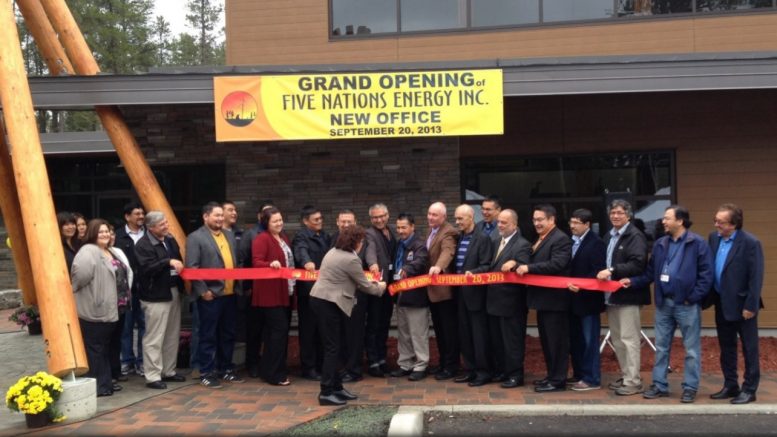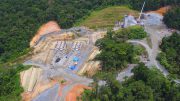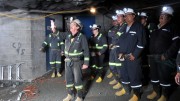If you are reading this on a cell phone or a computer, you have fueled the demand for the dozens of minerals that go into those devices. Copper, nickel, zinc, cobalt, gold, silver — just to name a few — are the backbone of the ever-growing digital economy. The greater the Cloud, the more expansive the search for and production of the Earth’s bounty of minerals.
It’s the same in the technological progress in all fields. Minerals are essential. Copper, lithium and graphite are the foundation of the batteries that power electric vehicles.
And if you are one of the thousands reading this at the 2019 convention of the Prospectors and Developers Association of Canada, you know there is a world of possibility.
It is fitting that the largest annual mineral exploration and mining event on the planet is in Canada — an ongoing global leader in the mining sector, with a production value of $44 billion in 2017, supplying 60 different varieties of mineral commodities to over 100 countries. Ontario’s mineral production boasted a value of $9.9 billion in 2017, and 90% of mining’s GDP stays within Ontario limits.
And unbeknown to many of those who call Toronto home, the bedrock of the well-known financial district of Bay Street is mining. Half of the world’s mining and exploration companies are listed on the Toronto Stock Exchange. Thirty per cent of mining capital is raised in Toronto.
When the Canadian mining sector is strong, the whole of Canada benefits. And that is especially true in Ontario.
We need to operate more effectively and efficiently. Industry leaders are applying digital communications, laptops and smartphones to the gathering of real-time data through sensors to take advantage of Big Data applications. To give a simple example, let’s implement ventilation-on-demand to reduce energy use, blowing fresh air only to where people are actually working underground, again employing state-of-the-art sensors and communications technology.
We need to dig deeper and explore further than ever before to unearth the mineral wealth that is the backbone of the new economy.
And if we are to be successful in going further to ever-more remote locations, we need to address the infrastructure requirements and recognize that we need to partner with those who live on the land and have been there for centuries.
As the former Ontario Deputy Minister of Northern Development and Mines, I’ve spent a lot of time in our province’s North. I’ve been in the communities. I’ve spoken with the people.
The litany of sub-standard living conditions is made real every time I’ve travelled. Proper housing is scarce and crowded. Wood-fired stoves keep generations of the same families just warm enough from the extreme cold in the winter months.
Federally funded educational facilities lag far behind the standard for kids in the rest of the province. There are no hospitals, few services.
And most wrenching, there is often no hope.
Mining can provide that hope. It brings an economic foundation for a future of growth and participation by Indigenous people. It is often the only modern economic activity in remote regions. It is already the sector that employs more Indigenous people in Canada than any other.
Mining companies have been leaders in developing Impact Benefit or Cooperative Agreements that commit to jobs, training and growing local entrepreneurs and companies through procurement of services. I have visited mine sites with Indigenous women driving a huge haul truck while others from her community are cooking the camp meals or providing security on the site.
Sometimes companies with deep pockets provide broader community benefits — a health station, a sports complex, a community centre.
Now we are on the verge of a social innovation to rival that of the digital revolution. More and more, Indigenous communities are joining with those who have the finances and the technical expertise to jointly develop resources.
Since the historic protection of Treaty and Aboriginal Rights in Canada’s 1982 Constitution, a framework of consulting and accommodating Indigenous communities has evolved. Much can be — and has been — said about the requirements and processes that have evolved.
As one who has been deeply involved in resource development, it is very difficult to objectively determine what meets the test of the required consultation and accommodation. And further, what does one do if the community does not agree and mounts a public campaign?
The answer is a conscious agreement between communities and proponents — an agreement that takes the form of a partnership that is strengthened by an equity partnership and, in particular, a controlling ownership by Indigenous communities.
In Ontario, Indigenous companies have built transmission lines. Five Nations Energy built the line from Moosonee north along the James Bay coast through Fort Albany and Kashechewan to Attawapiskat. Finally, people could run the toaster and the fridge without blowing a fuse in the old diesel-powered system. And De Beers could expand the line from Attawapiskat to power its Victor Mine operation.
In northwestern Ontario, Wataynikaneyap Power — a partnership between First Nation communities, Fortis and RES Canada — has built a line from Red Lake to Pikangikum First Nation, the first of many remote communities that will be connected to the grid.
The power sector and other infrastructure often involve long-term contracts that help create a more certain return with less risk. Mining has a higher risk profile and production of mines can be relatively short-term. But the opportunity exists to explore new equity arrangements.
At times the mining sector has been criticized for being slow to innovate technologically. But it is on the verge of being able to dramatically innovate socially through its partnerships with Indigenous people.

David De Launay
— David de Launay is a former Ontario Deputy Minister of Northern Development and Mines, and current Chair of the Advisory Board at Enterprise Canada, one of Canada’s leading strategic communications, public affairs and public relations firms. Visit www.enterprisecanada.com for more information.





Be the first to comment on "Commentary: Partnerships with First Nations key to Canada’s mining resurgence"